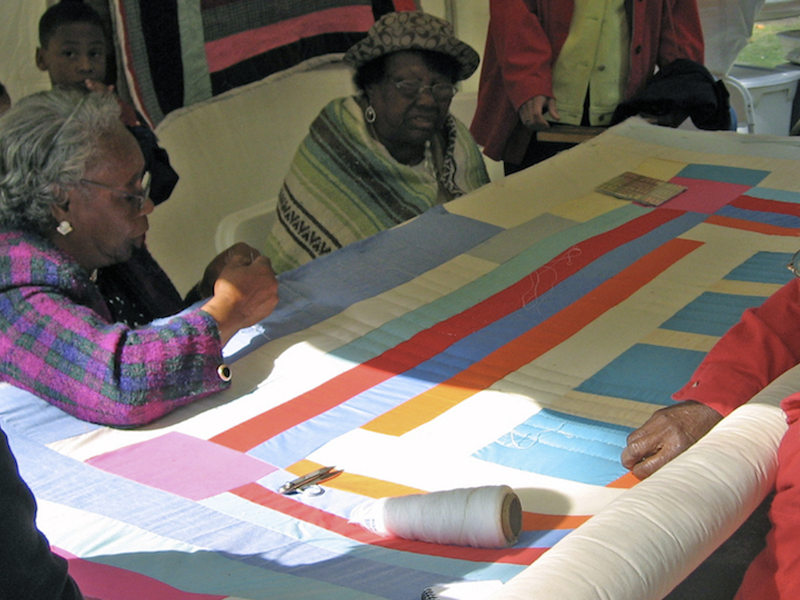This past weekend, our Textile Design Guide featured the inspiring stories of two 19th century textile entrepreneurs. In continued celebration of Black History Month, today we’re spotlighting the modern success of the black quilting community of Gee’s Bend.

Old cable ferry between Camden and Gee’s Bend, Alabama |
Marion Post Walcott, Farm Security Administration | Source
Located in the heart of the Deep South, the rural hamlet of Boykin is surrounded on three sides by the meandering Alabama River. In 1816, Joseph Gee established a cotton plantation on this small swath of land. Following emancipation, many of the former slaves stayed, molding new lives as independent sharecroppers. Today, the current community numbers less than 300 people. In a testament to the weighty memory of antebellum history—the riverside community is still referred to as Gee’s Bend.

Jennie Pettway and another girl with the quilter Jorena Pettway | Arthur Rothstein, Farm Security Administration (1937) | Source
In the past three decades, there has been a great deal of commercial and cultural interest in the traditional quilts made in Gee’s Bend. This popularity and press can partly be traced back to William Arnett, a prominent collector of African American art. In 1998, Arnett discovered a photo of a quilt fabricated by Gee’s Bend resident, Annie Mae Young. Upon finding Young, Arnett was overwhelmed by the local women’s natural skill and unique style. Arnett subsequently facilitated “The Quilts of Gee’s Bend” exhibition, first showcased at the Museum of Fine Arts, Houston in 2002. A year later, the women officially established the Gee’s Bend Quilters Collective, a coalition of over 50 members dedicated to helping the women sell their works of art.

Women from Gee’s Bend work on a quilt during the 2005 ONB Magic City Art Connection in Birmingham, Alabama | Andre Natta (2005) | Source
The Gee’s Bend quilts are unique for several reasons. The women display a great deal of improvisation and artistic individuality. Many art critics consider the quilts among the finest works of American abstract art. And while the members individually compose their own quilts, the final act of sewing the pieces together is a communal activity. In this manner, the quilts are emblematic of the trust and generosity that flows through the collective.
Additionally, the quilts serve as an apt reminder of the historical circumstances in which this quilting culture first arose. This craft was originally born of need and paucity, not leisure or profit. The first quilts of Gee’s Bend were created to stave off the cold in slave cabins and were made out of any scraps available. Today, many of the women continue the tradition of recycling fabric materials and work clothes in their patchwork designs.

Denim and corduroy blocks quilt by Flora Moore of Gee’s Bend | Gina Pina (2015) | Source
While the Gee’s Bend quilts are not currently on exhibition, you can view a large collection of the quilts through the Souls Grown Deep Foundation website.



Leave A Comment